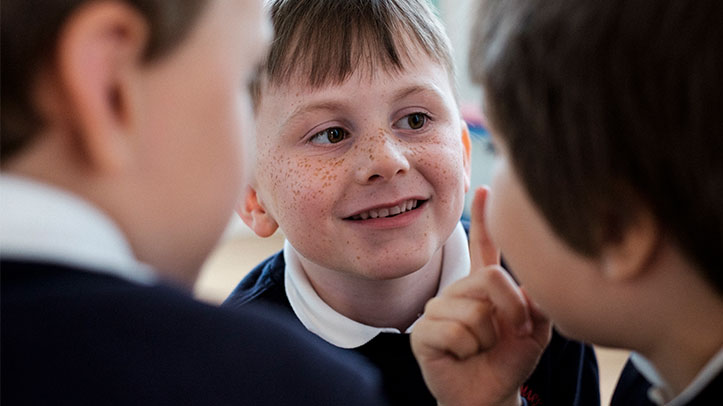
Policy briefing
Ever since last August, the Children’s Commissioner has said “Schools must be the last to close and the first to reopen.” This is now a well-used phrase as parents, teachers, scientists, politicians and the media all recognise the massive impact that the lockdowns are having on children’s education, and even more importantly, on their wellbeing. Parents have shared stories of children crying in front of laptops, struggling to motivate themselves to learn from home and of behaviour problems escalating. The Government’s own survey of children’s mental health last summer found the prevalence of mental health problems had jumped from 1 in 9 children to 1 in 6 as a result of the pandemic and lockdown.
Unfortunately it is a lot easier to close schools than to reopen them. Everyone recognises the necessity of reopening schools as soon as possible, but hope alone will not make it happen. What is lacking is a clear roadmap towards this. There is a real danger that schools will remain closed until Easter at the earliest, or even into the summer – not because the virus makes this inevitable, but because of a lack of planning.
The exam question that needs to be asked at the top of government is: how many children of what age could return when and where, under what level of community transmission; and what should we do now to facilitate that? This should be the subject of daily briefings and meetings as part of the No. 10 and Cabinet Office Covid response.
SAGE can provide modelling of different options – and at the end of this note we suggest what evidence would be helpful – but ultimately it is for government to think creatively about what those different options might be, explore all possibilities, come up with a plan, and ultimately make something happen. Below are some options as a starting point for government to refine further.
This document does not set a fixed date by which time schools should be fully open, but it provides a framework for making those decisions. The Government needs to use this framework to create an agile roadmap to welcome back some pupils within the existing headroom, while also generating more headroom using wider measures elsewhere. It also needs to work with schools, unions and local authorities now to refine and deliver this plan. Setting the plan out now not only increases the prospects of schools being able to return, it would also improve trust amongst schools, teachers, parents and children.
Example options for gradual reopening
It may not be currently possible for schools to fully reopen nationally before Easter, but that does not mean it is impossible for some children to go back in some areas on a smaller scale – reopening is not a simple on/off switch.
- SAGE has previously estimated that alternating weekly attendance with halved class sizes has an effect of 0.1-0.2 on the R rate – soon something like this may be feasible for certain year groups, especially in a few weeks’ time now that cases are falling and the R rate appears to be below 1 in some parts of the country.
- Depending on local circumstances, there could be a staggered return of pupils, for example starting with year 6, reception and year 1 in primary schools and then extending to all primary classes, possibly combined with rotas. This would be a careful approach, limiting numbers in school for the first couple of weeks and enabling new processes, such as social distancing guidelines and testing to be bedded in.
- Secondary schools may need to reopen later but pupils in years 11 and 13 should be brought back earlier because it is such a crucial year for their grades. Urgent clarity is needed on how these pupils will be assessed, and how long they will spend in school. They would usually be spending time at home revising for exams in the summer term – this year it is important that this time is used to help students catch up.
- Rotas, alternating classes or reduced class sizes could allow a range of year groups attend school, but with pupils in each year group taking turns.
- It may not be possible for schools in all areas of the country to open at the same time, or to have the same scale of reopening. But the Government should set out a feasible scale of reopening in each local area, and how that will develop over time as local infection rates and R numbers come down. For each X% reduction in infections or the R rate, a commensurate Y% increase in days attended by younger children (or Z% increase in days attended by older children) becomes possible. It may be still be the case that in each area, older children start returning to school some period of time (e.g. a month) or so after younger children do so. This enables a plan that is ambitious but still safe and agile enough to respond to the public health situation.
- Furthermore, while the current headroom in the R rate for school reopening may be limited, that does not mean that additional room for manoeuvre cannot be found by implementing additional measures outside of education. For example, additional policies that help to suppress the virus elsewhere – by reducing the risk of imported cases or increasing rates of isolation among those who test positive – create additional headroom which can then be ‘spent’ on reopening schools.
Whatever the plan is, it must be clearly and transparently communicated now. We need to see an end to information being briefed out to weekend newspapers. Schools and parents deserve to get absolute clarity on plans communicated appropriately through official channels. Alongside the plan to get children back into the classroom there should be a regular Downing Street press conference, led by Boris Johnson, the Chief Medical Officer and the Chief Scientific Adviser, to provide progress updates against this plan and answer questions from teachers, children and parents.
What needs to be in place to support schools
In order for teachers and parents to be confident in returning children to the classrooms, a number of key measures need to be in place:
- Effective testing should be rolled out in all schools, both secondary and primary, so that all teachers can undergo to high-frequency lateral flow testing. This will enable asymptomatic infectious cases to be identified quickly, and as well as providing reassurance to teachers and parents.
- All teachers and other school staff, like teaching assistants, catering staff and lunchtime supervisors, should be prioritised for vaccination after the first four vulnerable groups, starting with staff in special schools and alternative provision. This would help teachers feel safer in the classroom and help to prevent the staffing absences that make it harder for headteachers to keep schools open. It is not necessary for all teachers to be vaccinated before schools start to reopen more widely but this process should be set in train as soon as possible.
- Updated guidance for school settings on safety measures such as social distancing, fresh air and the use of masks must be updated using the latest evidence on transmission. This guidance needs to be available far in advance of schools returning and not be subject to frequent and repeated changes, given schools too little notice to implement it effectively.
- Additional spaces for teaching which schools can use, through other buildings or temporary structures, in order to safely accommodate more pupils.
- More funding is needed for schools to implement these measures effectively, including for paying supply teachers, additional spaces and appropriate PPE equipment.
Once children are back in the classroom, there must be an unprecedented focus on supporting pupils in the wake of this pandemic, both in terms of educational catch up but also in relation to children’s wellbeing. We need to see:
- A turbo-charged catch up programme, with additional funding for schools to get children the additional tutoring and other support to help them catch up. This should place a particular focus on areas hard hit by the virus in terms of school closures over the academic year.
- A long term plan to reduce the disadvantage gap between poorer and more vulnerable children and their peers.
- A review focused on next year’s exams to learn the lessons of the last two years and recognise the differential impact on learning that the pandemic has caused.
- A massive drive to improve children’s wellbeing, with more funding to increase access to specialist mental health services and an NHS funded counsellor in every school.
Further evidence to support the roadmap
It is possible to figure out the broad thrust of the plan, in qualitative terms, quite quickly. But in order to narrow down the options and finalise the precise details in quantitative terms, and additional evidence on the costs and benefits of each options may be needed. The Government should therefore:
- Reconvene the SAGE subgroup on schools to consider the evidence that has emerged since the last meeting on the effect of the new strain, the latest impact of school closures and lockdown on transmission rates, and likely effects of different forms of partial reopening.
- Come up with a suite of different school attendance options for SAGE to model, including particular variants of year and age groups, rotas, or class sizes.
SAGE should then rapidly assess (taking into account the new variant):
- The community transmission conditions need to be in place for different levels of school reopening (without compromising wider efforts to suppress the virus), in terms of:
- Levels and trends of the R rate by region
- Levels and trends of confirmed cases, infections and test positivity by age group, region and locality
- Progress on the vaccination rollout by age group, region and locality
- The effects of different attendance options on:
- Within-school transmission
- The R rate
- Overall school attendance
- The disadvantage gap
- Children’s education, social development and wellbeing
- The increase in days attended by different age groups that becomes possible following a given reduction in infections or the R rate.
- The impact, since the beginning of term, of current levels of school attendance on community prevalence.
- Options for increasing the total ‘headroom’ available for school reopening, via other economic and social measures that reduce the number of new infections in the community or improve isolation rates among those infected.


